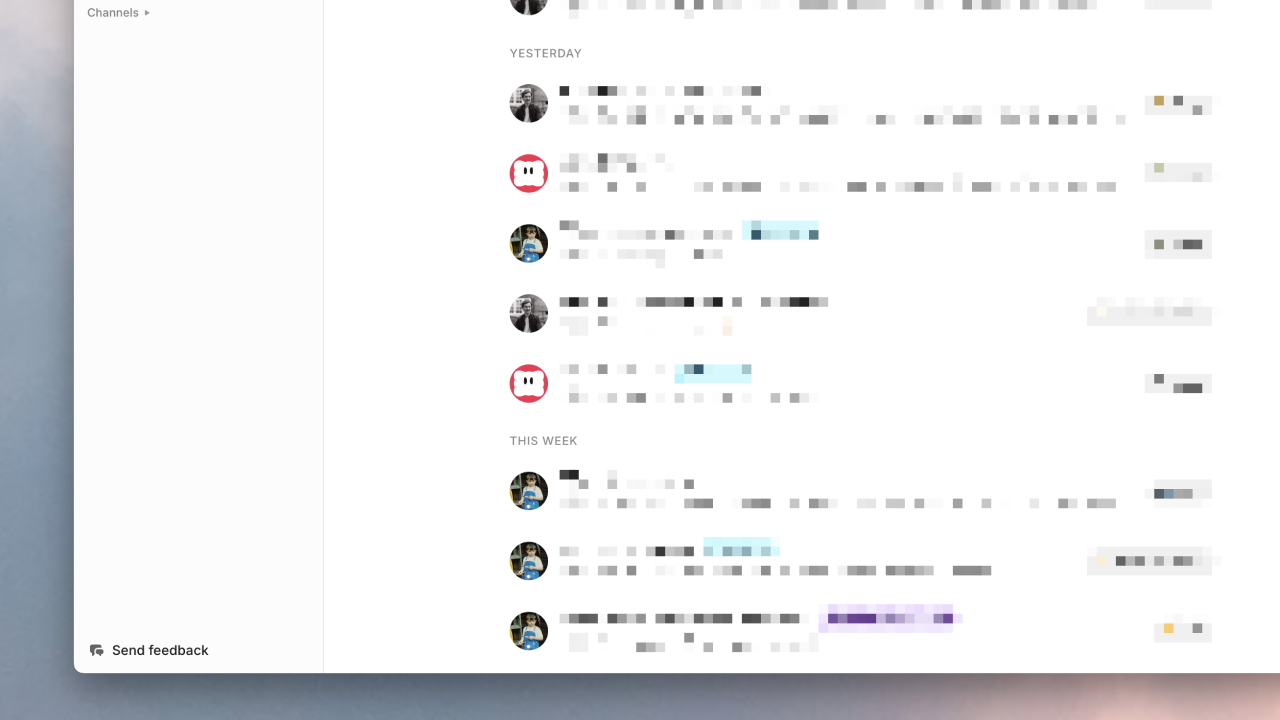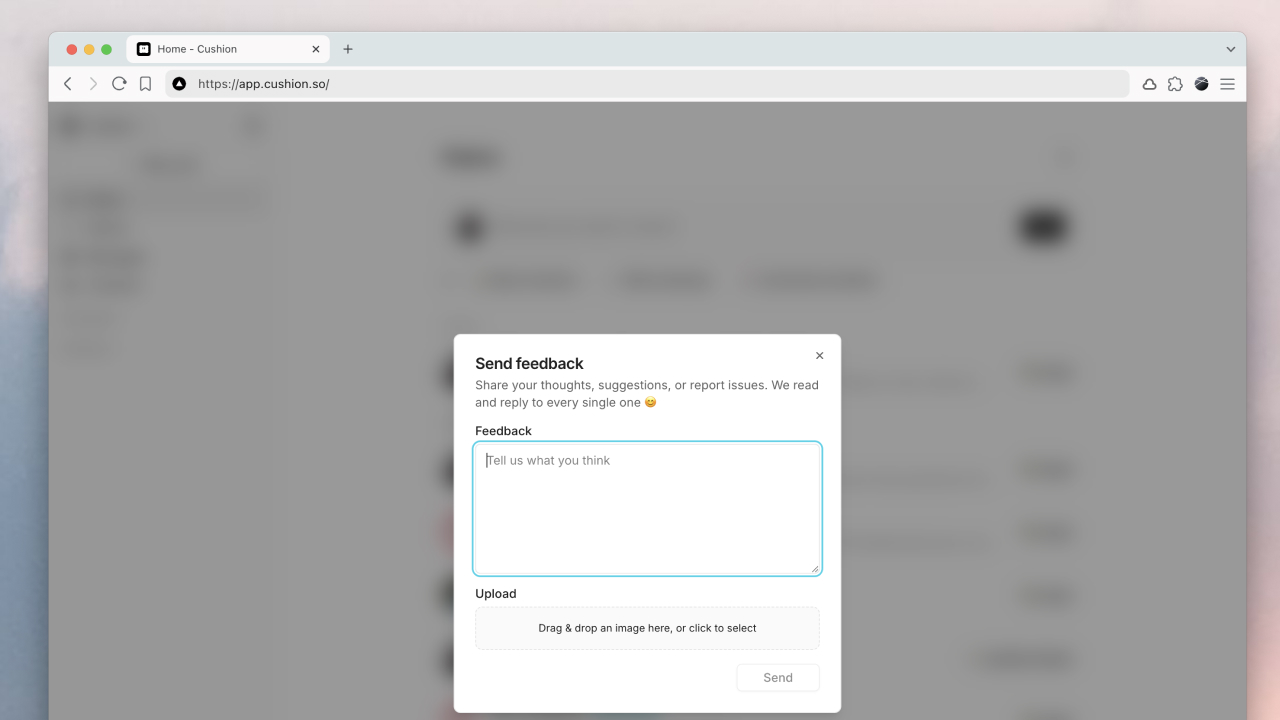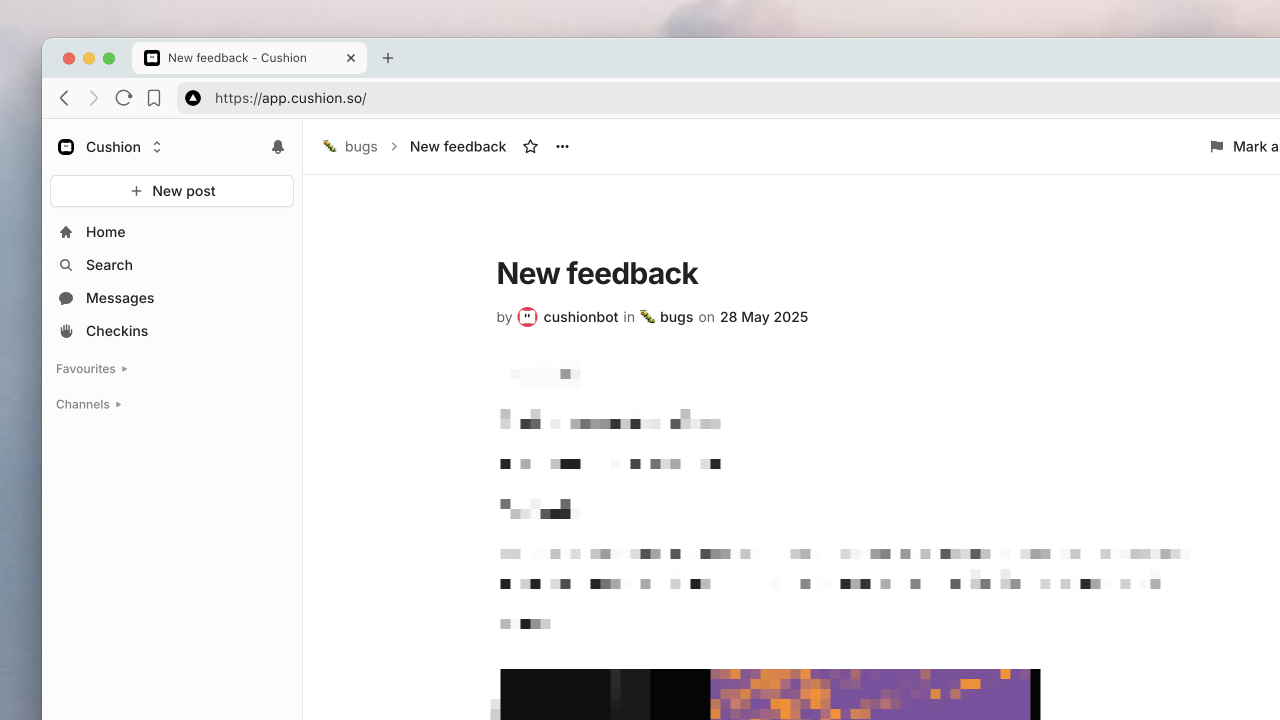We’re building a calmer, more async-friendly alternative to Slack, Discord, Teams, and all the other work tools people seem to hate.
Cushion is still in early access, and in late April we rolled out a tiny feature that made it ridiculously easy to give us feedback. The impact on the product’s UX has been huge, so much so that I felt compelled to share it.
Why feedback means so much to us
For us, nothing matters more than user feedback.
We believe products live and die by it. And we want early teams using Cushion to feel a real sense of ownership. This is their tool as much as it is ours. If they don’t love it, then honestly, what’s the point of us getting out of bed in the morning?
Our rules around feedback
When we built this feature, we had a few principles guiding us:
-
Giving feedback should be dead simple. Users should have an extremely simple way to let us know what’s working and what isn’t.
-
Bugs are top priority. If someone reports a bug, nothing takes precedence over fixing it.
-
Everyone should feel heard. Users should feel they can ask anything, suggest anything, and know we’ll take it seriously. This is early access; their voice shapes the product enormously.
Why we ended up rolling our own feedback tool
Cushion is bootstrapped, and Rob and I want to stay as lightweight as humanly possible.
We think that to stay in this for the long haul, we have to stay lean for Cushion to avoid the fate of similar tools that came before us.
And with a decision like that come tradeoffs. We’re not going to go out and spend thousands of pounds (🇬🇧) each month on SaaS products that could save us some time. We’ll stay nimble and build the tools ourselves even if it takes a little bit longer.
We could have used great tools like Intercom, Plain, or Zendesk. But the reality was that the more we thought about it, the more we realised that building our own tools would give us a chance to dogfood Cushion even further.
We’ve been able to take each piece of feedback we collect and turn it into a Cushion post, where Rob and I can discuss it (async, of course), action it with a pull request, or reply via our shared inbox.
How Cushion’s feedback tool works
We have a simple form which users can find in the bottom left-hand corner of Cushion’s main interface:

This then opens a modal with a simple feedback form:

Once feedback is entered, we collect it into posts in our #bugs channel for triage:

This means Rob and I can review and discuss the report before either fixing it or replying to our auto-responder message to ask any clarifying questions.
Having this all live inside Cushion is amazing for us. It means we can view it in a focused, thread-based view where we can comment on it, move it to another channel if we realise it’s not a bug or even attach GitHub PRs with our GitHub integration. We can also mark it as resolved once we’ve shipped a fix.
The results of this approach
Last week alone we received dozens of pieces of feedback. We’ve read, replied to, and shipped fixes for almost all of the bugs that were reported (and are already working on the rest). We’ve also followed up on many other comments and suggestions.
This kind of loop - one that’s fast and user-centric - is exactly what we think will set Cushion apart. Relentless focus on delivering value is our mission. And this feedback tool is helping us stick to it.
Conclusion
We made it easy to give feedback. We take every bit of it seriously. And we built the system ourselves because we believe it’s worth doing right.
Want to be part of shaping a work chat tool that respects your time and helps you and your team focus and communicate effectively? Email us at hey@cushion.so for team access. We’ll set your team up and let the floodgates open.
We’ll read and react to every single piece of feedback you have for us, and that’s a promise.
